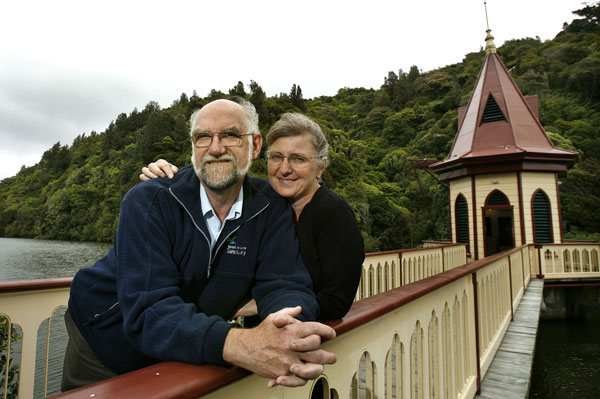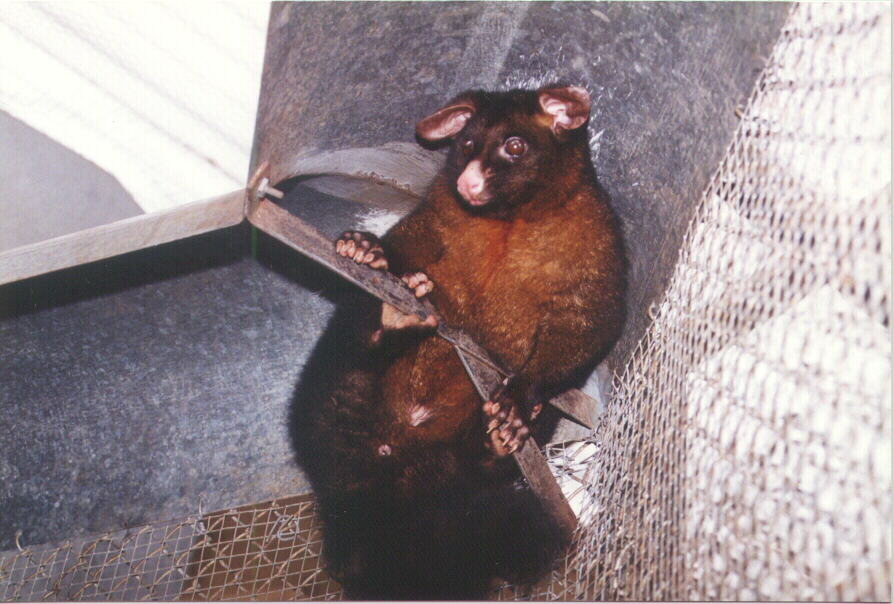A World-First Sanctuary
www.visitzealandia.com/About/History/A-World-First-Sanctuary, n.d
Creating the Proposal
ZEALANDIA’s founder, Jim Lynch, and his wife Eve joined the local branch of the Royal Forest & Bird Society as committee members in 1989. Early in 1990, Jim proposed developing a strategic plan that would be a comprehensive inventory of all the natural assets of Wellington city. It would describe how they should be managed and preserved for the future and was called ‘Natural Wellington: A Plan to Preserve and Enhance the Natural Treasures of Wellington City’. This document was the inspiration for ZEALANDIA. Its theme was to “Bring the Birds back to Wellington”.
Jim noticed during his research that the Karori reservoir (where ZEALANDIA is now located) was very strategically placed for a sanctuary. At that stage it was still a fully operative water supply area so nothing could be done with the area. Around the same time, Jim and Eve witnessed an experiment conducted by the Department of Conservation (DOC) trying to keep out rats from a small bush area with a low level electric fence. The idea didn’t work but it initiated the concept that electric or barrier fencing to keep out predators might be a possibility.
Shortly afterwards in 1992, GWRC decommissioned the top dam at the Karori reservoir. Jim then began writing the sanctuary proposal, drawing on his management systems and organisational design background and all his conservation and biology knowledge. This proposal was the key to the sanctuary getting started.
Jim set about selling the idea once the proposal was finished. He discussed the proposal with conservation NGO’s, WCC, GWRC and local DOC staff, all which formally endorsed the proposal and were enthused about the vision. The outcome was a seed funding of $60,000, arranged to conduct a feasibility study.
Forming the Trust
A feasibility study tested all the key aspects of the vision: tenure, fencing, eradication, restoration, tourism viability and operating structures. It included a draft business plan and costings and an assessment of financial viability. Most of the work was original and ground-breaking design. The process took about 6 months and late in 1993 was accepted by GWRC and provisionally by the WCC subject to public consultation on the proposal.
Next a steering committee of 9 people was formed, who ran the public consultations, set up the Business Plan and the trust deed, and appointing the initial trustees. In July 1995 the Karori Sanctuary Trust was officially launched. Established as a non-profit charitable trust that allows the community to participate in the development of the Karori sanctuary, the Trust and its members are responsible for the direction of the entire project. Public approval and raising the funds In 1997 a draft management plan was released for public submission. The Wellington City Council approved the final plan in January 1998. A portfolio was brought together of community funders who committed $2.5 million for the construction of the predator proof fence in February 1998. In 1999 the Trust signed a 30-year renewable lease with the WCC.
The Ground-Breaking Fence
A group of 22 conservation managers, scientists and engineers got together in 1993 to study a variety of existing fence designs. None proved suitable for ZEALANDIA’s needs so the decision was made to design a totally new predator exclusion fence.
An extensive programme of animal trialling began in 1994. The trials used live animals and tested a range of animal capabilities such as jumping, climbing, digging and their ability to pass through different size gaps.
Possum
Superior climbing ability
Components trialled: Top hat, wall (height)
Cat
Highest jumper
Components trialled: Wall (height)
Norway Rat
Most active burrower
Components trialled: Skirt
Stoat
Best jumper of all the smaller animals. Behaviour generally unknown.
Components trialled: Wall (height and mesh), skirt (hat)
Mouse
Smallest size
Components trialled: Wall (mesh)
These trials resulted in several prototype designs that were then tested against nearly 200 animals (including rats, mice, cats, stoats, possums, weasels and ferrets).
Finally issues like materials, installation costs, wind and visual effects were looked at. The trials resulted in four distinctive designs. The chosen design is the simplest, most robust and easiest to install. There are three parts to the design: curved top hat, wire mesh wall, and underground skirt.
Building the Sanctuary
Construction
Detailed design work was completed in 1998. Construction of the fence began in April 1999 and was completed in August the same year. It is formed on the inside of a 3 metre wide track (to stop animals jumping across) and is 8.6 kilometres long.
The fence is made of a tight wire weave mesh with a minimum gap of 6x50mm which was thought to exclude mice. At the base a woven mesh skirt extends outwards below the ground for 400mm. The skirt has proved to be an effective barrier to all burrowing animals.
To stop jumping animals the fence only needed to be 1.8 metres high. However the fence has been built alongside a popular recreation track so for safety reasons the height has been raised to 2.2 metres.
Bio-security
Public entrance to the sanctuary valley is at a heavily monitored double-gate entrance at Waiapu Road.
To assist with the pest free status of ZEALANDIA, strict bio-security measures are enforced, which include all vehicles, bags and equipment being checked prior to entry to the valley to minimise risk of accidental introductions, in the same way that visitors to Little Barrier or Kapiti Island sanctuaries do.
However, there is always the possibility of mechanical failure, breaches of the fence or subsidence allowing re-invasion, so ongoing monitoring of the fence, ground and vegetation, as well as having strategies to detect and control re-invasions, are a permanent and very important part of the management of ZEALANDIA.
Pest Eradication
The first key to restoring the sanctuary valley back to its pre-human state was to remove introduced mammalian pests so our native species can thrive. The eradication process happened in various stages, before, during, and after the erection of the fence.
In 1998 the eradication planning was completed. The plan was ambitious: the world’s first eradication targeting 13 species at once (opposed to the standard 1 or 2 species), the world’s first eradication operation on the mainland targeting rodents, cats, possums, mustelids and rabbits and the world’s first eradication operation targeting hedgehogs and hares. During this time, all necessary consents are obtained.
In 1999 50 km of tracks are cut for bait stations, and transmitters are put on 3 stoats (Hoochy Koochy, Vauxhall and Baldy) and 2 feral cats (Pylon Pussy and Major Tom) to monitor survival during eradication operation. The death of the three radio-tagged stoats showed that poison was effective for this species.
Possum trapping then starts, conducted by Wellington Regional Council. Three tonnes of possums were trapped and over 1000 possums killed in 8 weeks. It is estimated that possum browsing, before the fence was built, removed 400 tonnes of vegetation from the sanctuary valley in a year, severely affecting regionally rare plant species such as northern rātā, tree fuchsia and kohekohe.
Resource Consent is then obtained for aerial application in the Sanctuary of cereal baits containing brodifacoum– the first ever approval to distribute brodifacoum baits by air in a mainland operation (previously only permitted on off-shore islands). Distribution of poison bait over two days - 4.5 tonnes of bait spread by helicopter and by hand.
Later that year bait stations and tracking tunnels are also installed for ground control and monitoring of rodents, mustelids, and hedgehogs; surveys also undertaken for possums, cats, lagomorphs (rabbits and hares), deer, pigs, goats & cattle; no evidence of surviving rodents (including mice), mustelids, cats, hares, deer, pigs, goats & cattle following the bait drop.
The last 4 possums removed in November and last hedgehog (Custer) trapped in December 1999.
In 2000 the last rabbit is shot. Pest mammal eradication complete - no rats or mice detected in follow-up monitoring. ZEALANDIA is officially the world’s first pest-free zone in an urban environment!
Unfortunately later that year mice were detected and have continued to reinvade since then, most likely due to minor flaws in the fence caused by settling or objects bumping into the fence.
In 2004 weasels are detected - the first known incursion since removal and assumed to have been due to a spillway issue. Both this incursion and a subsequent one in 2008 were successfully managed and no further mustelids detected.
In 2006 the Southern Bell frog was detected and successfully removed from the sanctuary, the first successful “eradication” of this pest species in New Zealand.

Photo: Dominion Post
Jim & Eve Lynch

Photo: Stephen Fuller
